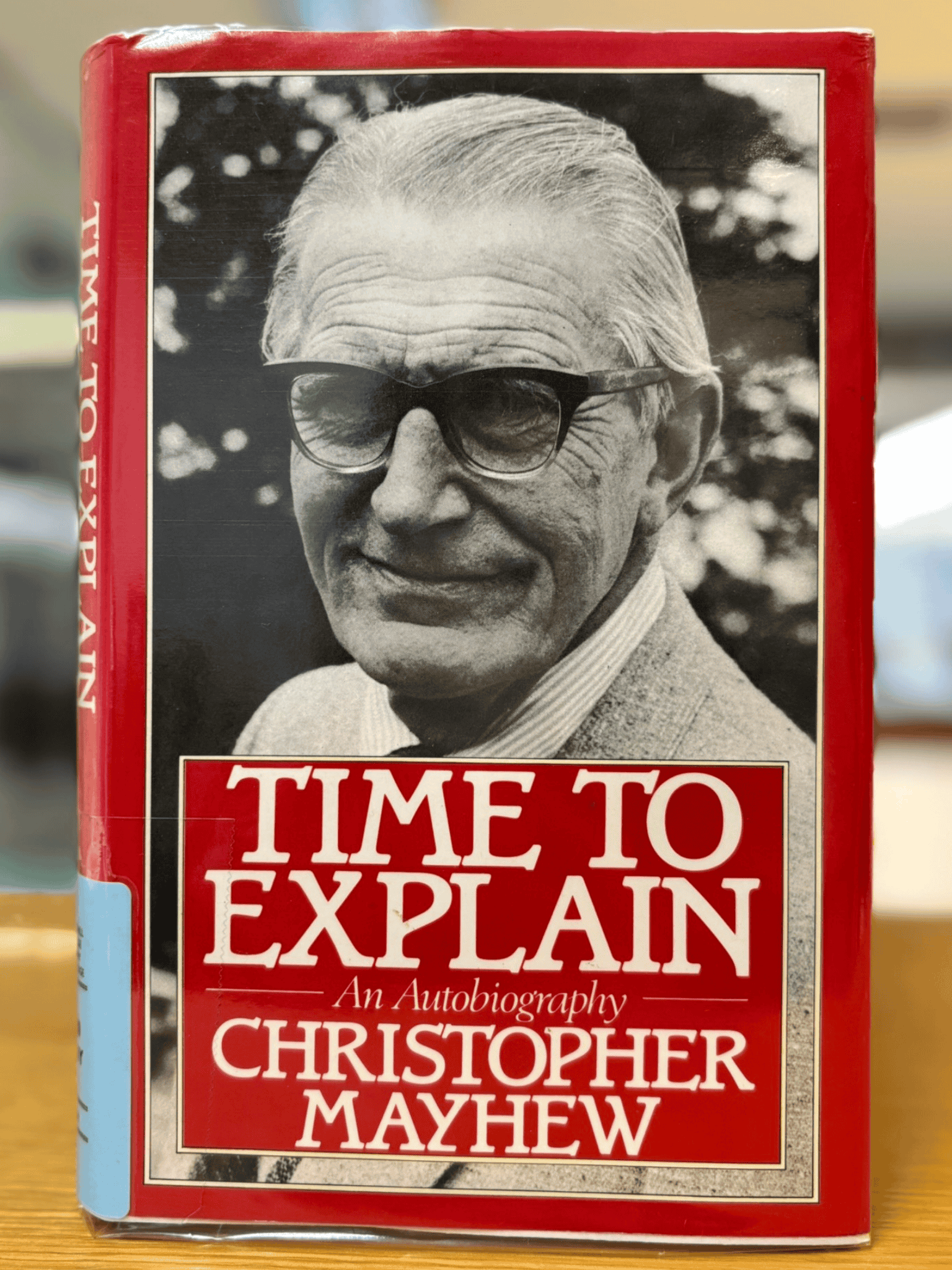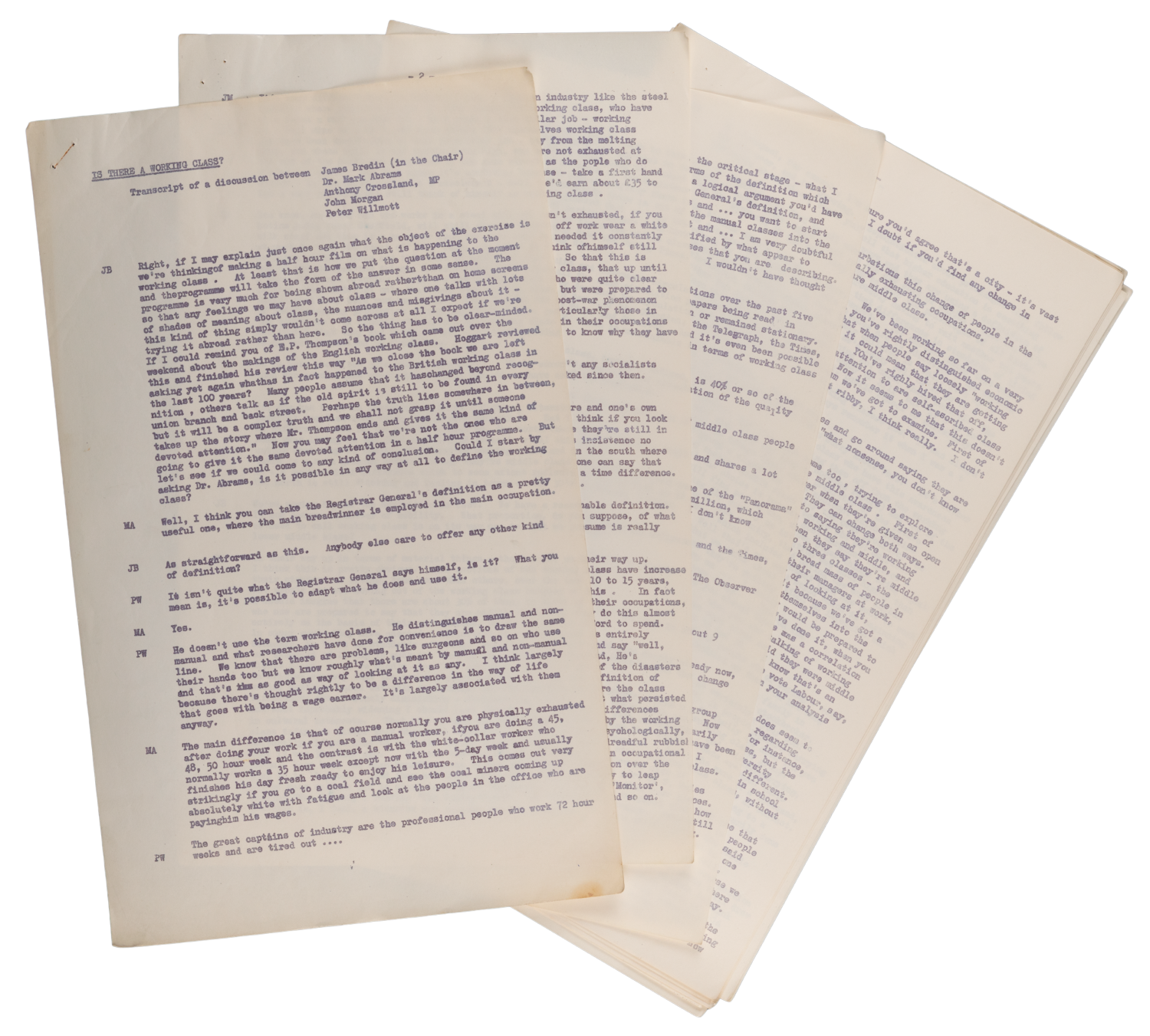Broadcasting Change:
The Rise of Commercial Television
In 1954, the Television Act marked a landmark shift in British broadcasting, heralding in commercial television for the first time.
A year later, ITV’s inaugural broadcast aired in London on 22nd September.
This online exhibition, curated by BA History students at Anglia Ruskin University, explores this transformative moment in British broadcasting history.
Drawing on our collections held at the Archives Centre, this exhibition reflects the students’ original research and interpretation of this pivotal moment in modern British history.
The 1954 Television Act. Source: The Papers of Percy James Grigg, PJGG 10/4, 1954.
The 1954 Television Act established independent broadcasting in Britain. Up until this point, viewers could only watch programmes broadcast by the BBC. The Act created the first commercial television network, overseen by the Independent Television Authority (ITA). The Act led to the launch of the first commercial channel ITV, which was made up of a network of private companies. Commercial television was funded by advertisements, which were broadcast on television for the first time.
ITV’s first broadcast took place in London on 22nd September at 7:15pm. It featured an introductory film followed by an evening of entertainment live from the London Palladium.
This document sets out the terms of being the new chairman of the ITA. It shows the new chairperson’s briefing and key goals. The document reflects the scale of growth during this early period of ITA’s history. It shows that 73% of the population had access to commercial television by October 1957, indicating rapid expansion and growth. It also sets out how the ITA was responsible for ensuring that television programmes contained ‘nothing which offends against good taste or decency and that maintain a proper balance in their subject matter and a high general standard or quality’. The first chairman was Sir Kenneth Clark, who took up the post from 1954–1957.
Source: The Papers of Percy James Grigg, PJGG 10/4.
A photograph of the control desk and transmitter hall at Croydon Station, which was used to broadcast the London ITV signal.
Source: Papers of Percy James Grigg, PJGG 10/4.
Advertising and Market Research
This document was written by Christopher Mayhew on 12th July 1954, before the Television Act was passed by Parliament, leading to the launch of ITA and the use of advertising in broadcasting. Many trade unions and Labour Party members opposed this change. Mayhew was a Labour MP and was a member of the National Television Council. The document discusses the Council’s stance on resisting commercial television in Britain and whether they should dissolve their organisation. Mayhew suggests that they still might have some influence on matters of regulation. This is a fascinating document which reflects the real concerns that were present before the launch of commercial television.
Source: The Papers of Lord Halisham, HLSM 2/41/44
You can find out more about Christopher Mayhew’s involvement with the National Television Council in his autobiography Time to Explain: An Autobiography (Hutchinson, 1987) which is available to consult in the Roskill Library.
This is a draft of a newspaper article for the Financial Times, written by the sociologist and market researcher Mark Abrams. The article, published on 5th May 1956, talks about the coverage and expansion of ITA and how 2 million families would be able to receive commercial programmes once the Yorkshire ITA transmitter opened in October. The article goes on to discuss and analyse viewer buying habits, noting how ‘ITA adults tend to be relatively heavy consumers of all forms of advertising media’. It is interesting to read how the article speculates upon the effectiveness of advertising and what factors make adverts successful. This article provides a insight into the thoughts of commentators of the time regarding the expansion and growth of commercial television and the effects on new audiences.
The article also reports that adult homes were slightly more likely to have ITA. 9% of adult homes had an ITA television. The research focuses on the number of ITA televisions in dense urban areas: London, Birmingham, and Manchester. Unlike the BBC, ITA had to be strategic with their advertising, being unable to cater to every possible audience. Knowing their audience, therefore, was important.
Source: The Papers of Mark Abrams, ABMS 6/2/3, 1956. The published newspaper article can be found in ABMS 5/43, 1956.
This report shares the results from an investigation in December 1958, which explored whether viewers of ITV could remember and recall the advertisements they encountered when they watched television. This research was conducted by Research Services Ltd, whose Managing Director was Mark Abrams. Television advertising was still in its infancy, as ITV had only launched 3 years before. This research was looking to see if viewers remembered the brand name or just the type of product in advertisements, and also explored when different adverts were broadcasted. The findings show that the audience could recall the products, though not necessarily the branding in television advertisements. This investigation was useful for seeing if television viewers remembered seeing advertisements and how advertisers could influence them in a short amount of time.
Source: The Papers of Mark Abrams, ABMS 3/73 pt 3, 1958.
The control room at Winter Hill station in Lancashire, which was used to broadcast Granada television and ABC Weekend TV.
Source: Papers of Percy James Grigg, PJGG 10/4.
Programming and Production
‘we’re thinking of making a half hour film on what is happening to the working class’
Is there a working class? This is the title of a transcript for a short film exploring this very question. The programme was produced with the help of the historian E.P Thompson who had just published his influential book on the history of the working class. The programme considers the nature of class differences between manual and non-manual workers. The aim of this production was to try and show a wider audience in the Britain and the world, that class should not define the world; trying to de-stigmatise classism. This transcript shows how commercial television producers began to embrace different types of documentary programmes.
Source: The Papers of Mark Abrams, ABMS 5/6.
‘the following colours and materials are unsuitable for television’
This letter from Meurig Jones, Production Executive for Independent Television for South Wales and the West of England, discusses which clothing colours and materials were suitable for Randolph Churchill (Winston Churchill’s son) to wear on television. This letter was written on 24th February 1960, which was 9 years before colour television came to ITV and the BBC. This shows how there was a lot of thinking behind the scenes to make sure people knew how to make their shows look aesthetically pleasing and show dimension on screen while not being in colour. The average person would not realise that wearing black or white would be a hinderance to the production.
Source: The Papers of Randolph Churchill, RDCH 4/46, 1960.
A photograph of the Lichfield Station building, used to broadcast the ITV signal in the Midlands.
Source: Papers of Percy James Grigg, PJGG 10/4.
Audience Responses
‘Now that we have grandchildren my wife watches children’s TV quite often’
This source explores the competitive approaches of both ITV and the BBC and how they attempted to appeal to people. In this letter, Geoffrey Jackson writes to the Managing Director of Television, Alasdair Milne, about how the ‘Newsround Weekly’ television show produced by the BBC had appealed to his wife, Patricia and their grandchildren. He particularly praised Newsround’s coverage of the Troubles in Northern Ireland, noting how ‘it dealt with our most sensitive national issue honestly, discreetly, fairly and without condescension’. Jackson specifically commended Monica Sims, who was the Head of Children’s Programmes at the BBC from 1967 and launched Newsround in 1972.
This personal account gives an insight into what the general public’s opinions were on TV at the time. It is important for us to read both history of the main figures included in the creation of the ITV, but also history from below as it reveals how ITV faced competition in viewership from the BBC. This letter offers a personal story, showing the opinions of different generations on national television.
Source: The Papers of Geoffrey Jackson, JAKN 6/1, 1978.
You can listen to an interview with Monica Sims on the Connected Histories of the BBC website here.
‘I’m no good for judging such things – my taste is evidently poles away from that of the lower classes’
From 1952 to 1957, Alexander Cadogan was Chairman of the BBC. In this diary entry for 28th January 1956, he writes about how he sat down to watch television after dinner. He watched one programme broadcast by the BBC and another by ITV – neither of which he enjoyed. He reflected how:
‘I’m no good for judging such things – my taste is evidently poles away from that of the lower classes. But ITMA [the popular radio show ‘It’s That Man Again] was very popular, so it would seem that the plebs know a good thing when they see it (or hear it). I wish we could have more of that’.
Source: The Papers of Alexander Cadogan, ACAD 1/27, 1956. Photograph from ACAD 1/19.
Find out more
The documents featured in this online exhibition are available to view in Churchill Archive Centre’s reading room, or through our free copying service.
This exhibition shows only a small selection of the material that we hold related to the history of commercial television. You can find more archive material relating by searching terms in our catalogue ArchiveSearch.
Thank you to ARU students Boris Beechey, Chloe McArthur-Russell, Naomi Penwright, and Lou Pope for their contributions to this online exhibition.
You can also find out more about the history of commercial television in a short introduction published by the Science and Media Museum.




















